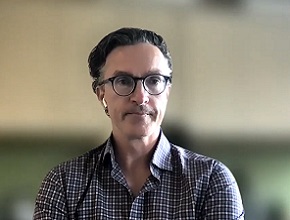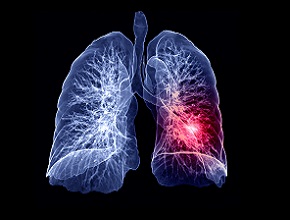Dr Ryan Zarychanski—an accomplished researcher, hematologist, and intensivist from University of Manitoba, Canada—joins Dr Roman Jaeschke to discuss the latest trial results regarding anticoagulation in critically ill patients with coronavirus disease 2019 (COVID-19).
For part 2 of the interview, click here.
Roman Jaeschke, MD, MSc: Good afternoon, welcome to another edition of McMaster Perspective. I have a pleasure of introducing Prof. Ryan Zarychanski, who is a senior author of 2 recent New England Journal of Medicine articles (doi: 10.1056/NEJMoa2103417, doi: 10.1056/NEJMoa2105911) dealing with the use of antithrombotic therapy versus prophylaxis in people with COVID-19, both with critical illness and with moderately severe illness. It’s a major pleasure to hear from the center of those 2 trials. And as most of us know, after the initial interest in steroids, remdesivir, and tocilizumab, their main interest was actually in the use of antithrombotic prophylaxis versus treatment. Prof. Zarychanski, maybe we’ll start by asking you about the organization of those trials.
Ryan Zarychanski, MD, MSc: Sure, well, thank you for this invitation, Dr Jaeschke. It’s a real pleasure and privilege to join you today in the McMaster Perspective podcast, or video series. Yeah, this was a lot of work to pull off for our team. We combined 3 independent platforms: the ATTACC (Antithrombotic Therapy to Ameliorate Complications of Covid-19) platform, the REMAP-CAP (Randomized, Embedded, Multifactorial Adaptive Platform Trial for Community-Acquired Pneumonia) platform, and the National Institutes of Health (NIH)–sponsored ACTIV-4 (Antithrombotics for Adults Hospitalized With COVID-19) platform.
How this evolved? It was an absolutely organic experience where the ATTACC platform, led by myself and others—Patrick Lawler, Ewan Gallagher—who we were evaluating therapeutic anticoagulation on the ward, and a separate platform through the REMAP-CAP [trial], which is a randomized, embedded, multi[factorial] adaptive platform study, were evaluating therapeutic anticoagulation as well as other interventions in the intensive care unit (ICU). And then what we did was we harmonized those 2 trials, then bringing the NIH ACTIV-4 trial, to evaluate therapeutic anticoagulation on the ward and in the ICU, tackling them separately, as separate questions with different adaptive stopping rules, and then within the moderate group, we evaluated hypotheses separately about treatment effects by D-dimer [levels]—that is, D-dimer baseline [levels]—according to [the value] 2 times the upper limit of normal or below that.
Roman Jaeschke: All right. I’d be curious… Obviously, you had to have an equipoise to start with, but I wonder what your predictions were before we look at what the results were.
Ryan Zarychanski: Sure. Well, as a critical care physician and hematologist, in particular, as a critical care physician… we were used to having our hypotheses being proven wrong. And this was no exception. I thought—and many of us did—that because of the at-risk nature of the patient population—those who were critically ill—those patients stood to benefit most from therapeutic anticoagulation. Given the high incidence of thrombosis, the high degree of inflammation that was present, and knowing that anticoagulation with heparin provided antithrombotic and anti-inflammatory effects, we thought they would benefit the most. And we were completely wrong. So, maybe the rest of this talk should be prefaced by that: We had no idea what we were doing, obviously. But that’s why we do trials, absolutely. Because if we wanted to guess from the beginning, we’d still be using hydroxychloroquine and giving plasma to everyone.
Roman Jaeschke: Well, we obviously have 2 topics: one is critically ill people and [another] one is moderately ill people. Maybe we could deal with what seems to be a little bit easier, which is critically ill [patients]. I wonder if we could define those people as you defined them?
Ryan Zarychanski: Sure. The multiplatform trial... Again, that had 1 harmonized intervention protocol, 1 harmonized trial protocol across 3 independent platforms, separated... Our statistical models or stopping rules were separated according to severe or moderate illness. Then, [the] moderate [group] was also subgrouped, or substratified, by D-dimer [levels]. We defined moderate and severe [groups] according to the baseline need for ICU-level care. ICU-level care was defined by the need for organ support at baseline, which was high-flow nasal oxygen, noninvasive or invasive ventilation, or vasopressors, also extracorporeal membrane oxygenation (ECMO). And the REMAP-CAP platform had a small caveat that they also defined that by receiving that kind of care in an ICU or repurposed ICU. So, for the most part, people were on the ward on facemask oxygen or prongs. And people were otherwise severe[ly ill] if they were on high-flow [oxygen] or [received] greater [support].
Roman Jaeschke: [What] strikes me [is] the major spectrum of the severity of disease—going from high-flow nasal cannula to ECMO—but that’s what it is. Do you plan to look at those subgroups within that category of severe illness?
Ryan Zarychanski: Sure. I mean, on the surface it does, but you can deliver a lot of oxygen with high-flow nasal oxygen [cannula], as you know, so, is it really much different than noninvasive and some mechanical ventilation? Really, I mean, sure, we don’t have, like, you know, different ways to control pressure modulation and the ventilator, but we can deliver a lot of oxygen...
Roman Jaeschke: Yeah, you made the point of certain almost advantages of high-flow versus the other modes of ventilation, but that’s a separate issue. If we could deal with this group again... I looked at the results and I think the conclusion at the bottom line is “Don’t use full anticoagulation unless there is a different specific indication.” Correct?
Ryan Zarychanski: That’s correct. We know [that] heparin is a good antithrombotic, a great one. We know that it has anti-inflammatory properties, but we know, now, through the multiplatform trial, that in a patient with severe illness defined as we had just discussed, any potential benefits are mitigated by the severity of illness already and there is no obvious treatment benefit and only harm is accrued.
Roman Jaeschke: What surprised me when I looked at the table in the outcomes in the severe group is that there was quite… I think, 4% difference in what was labeled as major thrombotic event. I think I am right. I may be wrong. And this dealt with things like myocardial infarction, stroke, pulmonary embolus, or peripheral thrombosis. Yet, there was at least numerically excess death and increased need for critical life support. Have you had any discussion how to reconcile these, what seems to me counterintuitive, outcomes?
Ryan Zarychanski: Well, the rates of thrombosis were low, first of all. The rates of death were substantial. And when combined, there was no absolute treatment benefit. It’s possible that there is an underappreciated microalveolar hemorrhage in those critically ill to that degree to warrant ventilation or ECMO, whatever, and that perhaps heparin worsens that causing more need for ventilatory support. That’s just a hypothesis, but that is one potential hypothesis.
Roman Jaeschke: But in the end, the results at least showed no benefit in any major clinically meaningful way, except what we just mentioned, and even numerical harm. So, I think the issue is more or less closed here.
Ryan Zarychanski: Yeah, I mean, there is a very clear result in the ICU population. That is, you know, a 99% probability that this is not helpful at all and a high probability of harm.
Roman Jaeschke: In the Bayesian analysis, I believe, right? Well, maybe one more question in this department.
Ryan Zarychanski: Sure, sure.
Roman Jaeschke: The trial was done over the period of time and we changed management in the meantime. I was looking at the fairly sparse use of tocilizumab, for example. Most people by that time were on steroids. Do you think... To what degree can we generalize? I mean, we have to generalize to today’s population, but it is a little different.
Ryan Zarychanski: Right, totally. And, I mean, I think that speaks to one of the many strengths of our trial. Despite small differences that occur between patients and over time in randomized trials, those differences are hardly ever accounted for in the analysis. But our baseline a priori statistical models accounted for age of the patients, which changes over time, as we know, sex, site—because management could vary over sites—and time because all these things vary over the course of the pandemic. So, those are all accounted for in the models presented.
Roman Jaeschke: All right. Well, thank you very much for this recording on the severe group and, what I suspect in the interest of time that I would like to spend on a different population, we’ll finish here and we’ll record a second part dealing with moderately ill [patients]. Thank you very much for now.
Ryan Zarychanski: My pleasure.
 English
English
 Español
Español
 українська
українська











